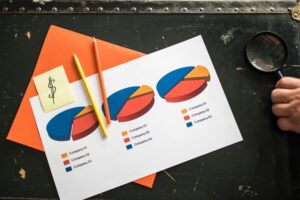The US stock market can be viewed through the lens of the S&P 500 index, even though this omits thousands of smaller companies and stocks. We will use it here as our proxy for the sake of discussion. This index has gone through 27 bear markets since 1900, and the average decline in each of those markets has been around 30%. For the sake of discussion we will say that a bear market is the name given to a drop of at least 20%. (There have also been several drops of 19% and if you want to include those, I will not argue.)
What do all of these bear markets have in common? Let’s look at a partial list of “causes”. Any such list will have to include at least these 10 things:
- Savings and Loan crisis,
- Asian currency crisis,
- Global pandemic,
- Collapse of the value of the US housing stock,
- Dot-com firms grossly overavalued,
- Over-aggressive federal reserve,
- Wars in various parts of the world,
- A “Lost Decade” in Japan,
- Collapse of currencies in South America,
- Chaos in Washington related to many, many, different things,
- Etc, etc, etc.
Since I am not quite old enough to remember back to 1900, let me talk about since 1970. Given all of that as the backdrop, $100 invested in the S&P 500 in 1970 would be worth $22,419 today (with dividends reinvested and taxes paid from some other source.) This represents an average total annual return of roughly 12%.
So what do all of these bear markets have in common. Simple: every single one (as well as the dozens that occurred in other markets) is a clear example of “This too shall pass.” Every single bear market was different in cause – the crisis du jour; and identical in permanent– NONE! For the long-term investor with the simplest strategy possible, all of this amounted to a huge pile of nothing.
What about those “safe” bonds. $100 invested in 10-year treasuries in 1970, reinvested annually in new bonds would be worth roughly $2286 today. By the way, an investment that grew at the rate of inflation would be worth $956 today, while dividends from the S&P 500 grew by a factor of roughly 17. Just for fun let’s throw in the fact that $100 spent on gold in 1970 would give you an asset worth $5545 today and it paid no dividends along the way. In fact, you may have paid a significant amount of money simply to store it over that span.
Here are a few more examples, if your financial planner charged you a fee of 1% annually and earned identical returns to the S&P over that time you would have roughly $14000 today. Thus, that 1% fee reduced your final balance by 38%. Of course, this ignores the fact that the portion of advisors that consistently achieved average returns over that span was virtually 0, and taxes due would include the effects of any trading that took place as well. In other words, the dream scenario for the advisor is still a major deduction from what the simplest possible strategy delivered. To put this “dream scenario” in perspective, the SPIVA database shows that fully 88% of fund managers under-performed the S&P 500 over the past 15 years. Furthermore, those that beat it over one time span are no more likely than average to beat it over the next period. In all fairness, the main job of an investment advisor is to prevent you from doing stupid things. Unfortunately, they appear to be just as likely to do stupid things as you are when left to your own devices.
Here is the bottom line. Over this span of time the “safety” of bonds was an illusion. The “inflation hedge” of gold was similarly illusory. The value added by your favorite stock picker is far less than what they charge in all but the most rare cases, and you have no way of identifying those cases until after the fact. Finally, every headline that told you “this time is different,” “this time the damage is permanent,” and “run for the hills, stocks are too risky!” can be summarized in one word – CRAP!!
Please notice that I did not say that the long-term equity investor didn’t suffer greatly over this period. A household fully invested in equities over that span of time saw their net worth cut roughly in half at least 4 times. You will always be told that a net worth that progresses every decade from $1 to $2 to $3 to $4 to $5 is “safe.” The simple truth is that a progression from $1 – $6 – $3 – $20 – $10 ends up at least twice as good, and ultimately is safer because costs also progressed 1-2-3-4-5.
Scared money don’t make money. Ownership of assets that produce profits is your last, and best hope at prosperity, and the easiest, most efficient means of ownership is equities. This hasn’t changed since 1900, and I see no reason to think that it ever will.
This time is different. I agree, the crisis of the day will always have a new name and a new face. At the same time, the best way to deal with this mess is to own as much of it as I can, pay as little for it as I can to hold it, and accept the fact that if there is no variance, there is no gain.



